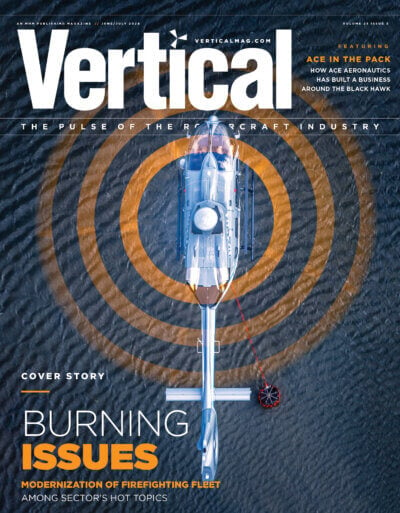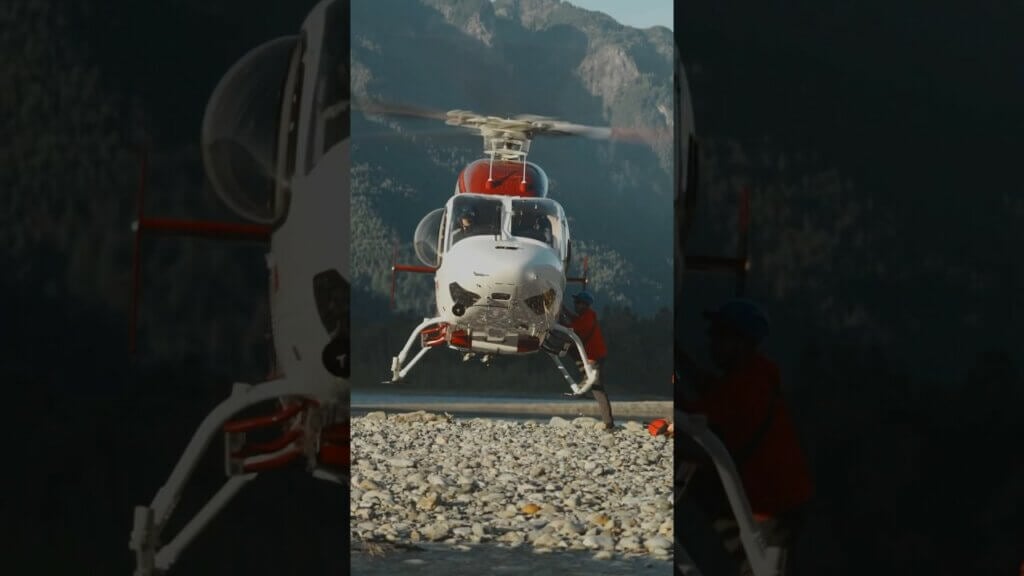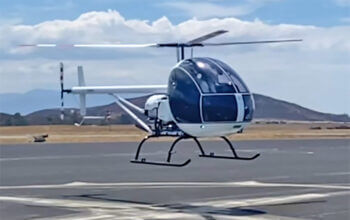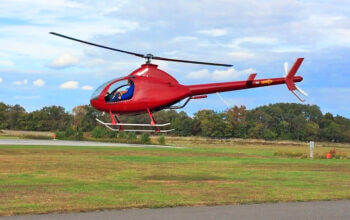Airbus Helicopters has announced a reduction in the official empty weight of its new medium H160 as well as reduced fuel consumption figures, which together will provide operators with an increase of 60 nautical miles (110 kilometers) of range or 100 kilograms (220 pounds) of additional payload.
Speaking to media about the development, Gilles Armstrong, head of H160 program, said the company was able to update the type’s technical data after confirming that the aircraft rolling of its production lines were weighing less than the “prudent” projections Airbus had made during its development.
“What we’ve been able to confirm with all these initial weightings is actually that we’re going to be able to reduce the official weight of the aircraft quite significantly,” he said.
The weight reduction is “mission-dependent” he said, with more heavily-equipped aircraft — such as those configured for search-and-rescue or law enforcement — seeing an even greater benefit.
“For a police helicopter, for example, we could have an [extra] SWAT team member, which is more like 120 kilos [260 pounds],” said Armstrong. “In all of these missions, you get an extra passenger or an extra 60 nautical miles.”
Three-quarters of the improvement is the result of a lower empty weight, with the remainder coming from a roughly three-percent reduction in fuel consumption, he added.
“The customers who received their aircraft already had the good news at each delivery,” said Armstrong. “What we’re confirming here is that . . . it’s not a one-off: we’ve actually done the work to confirm this as the trend and this is the new baseline.”
Armstrong said the news, revealed on the eve of HeliOffshore’s annual conference, will further enhance the H160’s appeal to the offshore market, arguing that it makes it even more competitive with the Leonardo AW139 — which has proved hugely successful in the offshore medium sector.
“We were already saying it does most of what the 139 does at a lower cost per hour,” he said. “And that ‘most’ in fact, gets to be very, very nearly all — because it closes that gap to the mission capability of the 139 very significantly. That’s what it changes in that picture.”
The type is set for imminent entry into offshore operations following the Federal Aviation Administration’s recent validation of its Flight Standardization Board report — representing the regulator’s approval of the H160’s training program. This means pilots in the U.S. can now be type rated on the H160.
“It was quite a long [approval] to get to, but it’s a really major milestone for us,” said Armstrong.
The first checkrides are set to take place this week, with pilots from launch offshore operator PHI due to begin their checkrides next week. With those passed, PHI’s long-planned route proving program in the Gulf of Mexico can begin.
The interest from the offshore sector is “huge,” said Armstrong, with one of the most important drivers being a request for fleet diversification and the latest safety standards in aircraft from oil companies.
“The key element that we’re all looking for is this PHI entry into service, and I think that’s going to be an important marker for the oil-and-gas business to see the 160 being a real presence in the market,” he said. “But the level of interest is very, very high. We’re getting, constantly, questions and discussions on how to bring it into all of the different oil-and-gas markets in the world.”
The manufacturer, he said, would continue to be “proactive” in bringing investment in tooling and training to bring the type into these new regions.
“We’re very conscious that for the operator it’s a big move to bring a new type into a region where it doesn’t exist yet,” he said.
The company has now delivered 28 H160s to customers around the world, with configurations now developed for every operating sector targeted by the OEM.
Earlier this year, Airbus confirmed a backlog of over 110 orders for the type. Armstrong said the company’s focus is now on reducing the lead time for deliveries.
“We’re now starting to offer shorter lead times, thanks to the sum of the [production] ramp up and having the configurations developed,” he said. “That’s really what we’re going into in this mid part of the year, is coming in with a better lead time, which will help us to then boost up that backlog again — go even further than that 100.”
Orders for the H160M — the military version of the type — represent 30 of the aircraft in the backlog, and Airbus is continuing development work on the “M” program. Final assembly of the first of three prototypes is due to begin in the next few months, with the second shortly afterwards.
“There’s a common baseline with [French] Army elements, which is the first step . . . and then there’s the Navy and Air Force after, and so you have to cover all of those common elements . . . and so that the prototype strategy covers that,” said Armstrong.









